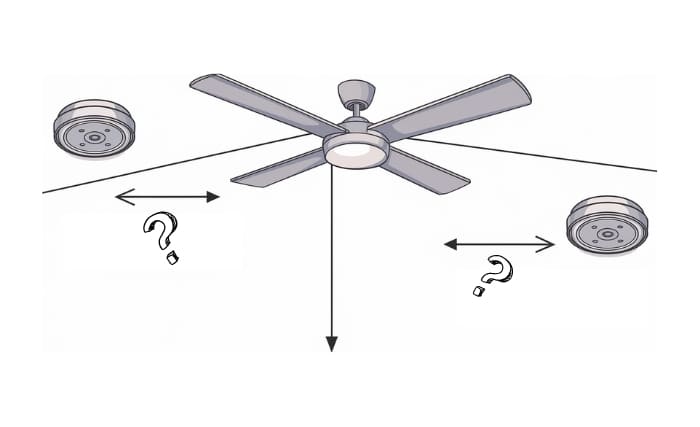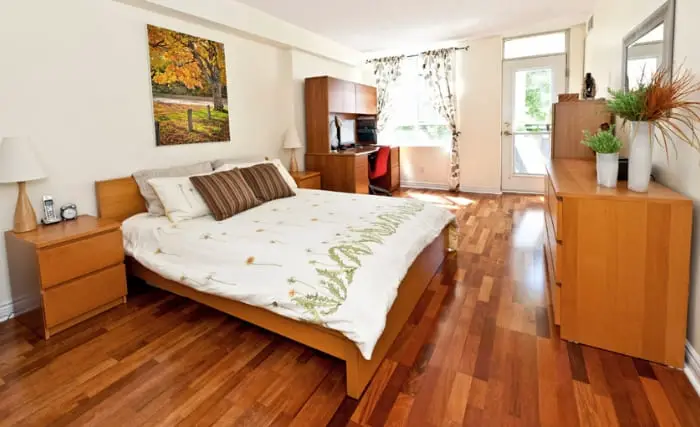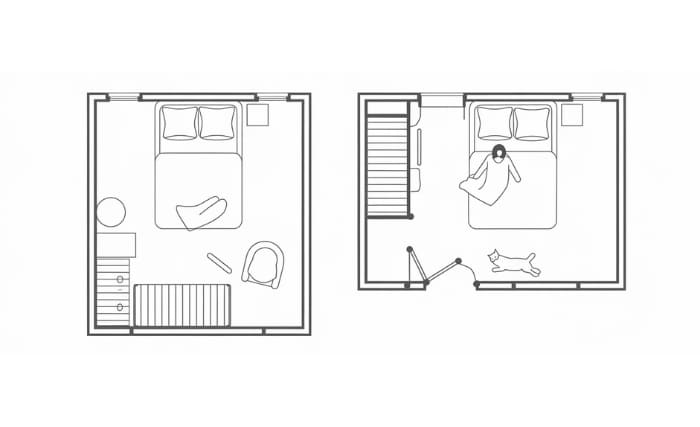Do All Bedrooms Have to Have a Window?
So like… ever wonder do all bedrooms have to have a window? Yeah, I used to think they did too—turns out it’s not always that simple. This post breaks down the basics of bedroom design (without the boring stuff), and why natural light ain’t just a vibe—it’s actually kinda important. But hey, don’t stress if your bedroom’s missin’ a window.
We’ll chat about some sneaky-smart design hacks and cool workarounds that still keep things comfy and safe. From legal stuff (yup, building codes matter) to just keepin’ your space feelin’ fresh, it’s all here. Whether you’re fixin’ up your place or just nosy about what counts as a “real” bedroom, you’ll pick up useful tips for makin’ your room feel bright, open, and super livable—even without a window.

DO ALL BEDROOMS HAVE TO HAVE A WINDOW?
Okay real talk—do all bedrooms have to have a window? Cuz honestly, I’ve seen some bedrooms that feel more like storage closets. And if you’re tryin’ to turn a spare room into a sleep spot, you might be wonderin’ the same thing. Is it legal? Is it safe? Or are we just all used to seein’ windows in every bedroom?
Let’s break it down without all the boring technical talk.
BUILDING CODES… YEAH, THEY MATTER
So, here’s the thing—building codes ain’t just suggestions. They’re like the rules of the game when you’re buildin’ or remodelin’. If you’re tryna figure out if your “bedroom” can get by without a window, this is where it gets real. And trust me, you don’t wanna skip this step.
WHAT THEY ACTUALLY SAY
Most codes (especially in the U.S.) follow somethin’ called the International Residential Code (IRC). And guess what? It pretty much says a bedroom needs a window. But not just any window—it’s gotta do stuff:
- Let in light. Natural light makes a room livable. Dark rooms feel… bleh.
- Let air flow. No one wants to sleep in a stuffy box, right?
- Be an escape route. Yup, in case of fire or somethin’ scary, that window might save your life.
So if you’re askin’ do all bedrooms have to have a window, the short answer? Yep. Unless you’re into breakin’ rules or want your “bedroom” to be a no-go with inspectors.
Table: Key IRC Requirements for Bedroom Windows
| Requirement | Specification |
|---|---|
| Window Size | Minimum opening area of 5.7 square feet (for second-floor windows); 5.0 square feet for ground floor. |
| Sill Height | No higher than 44 inches from the floor. |
| Window Height | Minimum opening height of 24 inches. |
| Window Width | Minimum opening width of 20 inches. |
These guidelines ensure that bedrooms remain safe and functional, but they may vary slightly by jurisdiction. Always check your local building codes for the most accurate information.
EXCEPTIONS AND ALTERNATE SOLUTIONS
Alright so—do all bedrooms have to have a window? Honestly, not always. There’s some wiggle room in the building codes, and in certain cases, you can get away without one. Yep, totally legal in some places, but ya gotta meet a few other requirements. I learned this when I was converting our tiny den into a guest room. No window, but hey—turns out there’s workarounds.
Here’s what can sometimes take a window’s place:
Skylights – These aren’t just fancy holes in the ceiling. They actually bring in sunlight, and some even open for airflow. If you’re high up, this might be your best bet.
Mechanical Ventilation Systems – OK, these are lifesavers (literally). They keep air movin’ even if there’s no breeze outside. We installed one, and it made a HUGE diff.
Fire Sprinkler Systems – Not the most aesthetic, but some areas allow ‘em as a sub for emergency exits—if local codes say it’s chill.
Point is, when folks ask do all bedrooms have to have a window, the answer’s a big fat “depends.”
SAFETY CONCERNS
Now let’s get real for a sec. Safety’s a huge reason windows are usually required. In an emergency—like say, a fire—you need a way out. Fast. Like, real fast. A window could literally save your life. That’s why some inspectors won’t even call a room a bedroom unless it’s got one.
And even if you’re just using it as an office or guest space, wouldn’t ya wanna know you could escape if needed? Food for thought.
THE IMPORTANCE OF EMERGENCY EGRESS
Here’s the deal—if a fire breaks out, your front door might be totally blocked. And lemme tell you, in that moment, you do not wanna realize there’s no second exit. That’s where windows come in.
So even if it’s just a small one, that egress window (that’s the fancy term) could be the only thing between you and disaster.
For those still wonderin’—do all bedrooms have to have a window?—you might wanna ask: should they?
FIRE SAFETY STATS
Okay here’s where stuff gets serious:
Over 40% of fire deaths happen in homes that didn’t have a way to escape.
And guess what? Bedrooms are often where fires start. Yep. Your cozy little nap zone could be ground zero.
Makes you rethink skipping that window, huh?
NATURAL LIGHT AND VENTILATION
But this ain’t just about life-or-death stuff. Let’s talk comfort, yeah?
Natural light and airflow are crazy important for your mental and physical health. Ever sat in a room with no window for a whole day? Feels like a cave, right?
Windows give us:
Sunshine (which = serotonin = happy vibes)
Fresh air (not that recycled, stale stuff)
A visual break from your walls (you don’t realize how much you miss trees ’til you can’t see ‘em)
HEALTH BENEFITS OF NATURAL LIGHT
Don’t believe me? Let’s break it down:
Better Mood – Natural light boosts serotonin. Basically, more sun = less grumpy.
Sleep Goals – Your body loves routine. Sunlight helps keep your sleep schedule on track.
More Productive – Seriously, studies show folks work better when they’ve got that daylight glow.
HEALTH BENEFITS OF PROPER VENTILATION
Now, on the air side of things:
Less Allergens – Stagnant air = dust parties. Gross. Good airflow keeps ‘em away.
Cleaner Air – Fresh air boots out those nasty indoor pollutants.
No More Hotboxes – Proper airflow means your room don’t turn into an oven in summer.
So no, not all bedrooms have to have a window. But your body might low-key beg for one anyway.
ARCHITECTURAL AND DESIGN PERSPECTIVES
Let’s shift gears. Beyond safety and health, windows just look good. Ever seen a magazine-worthy room without a window? Me neither.
From a design standpoint, windows = depth, dimension, and vibes. Take ’em away and you gotta work harder to keep the room from feelin’ like a glorified closet.
ENHANCING AESTHETICS AND COMFORT
When we skipped the window in our guest room, we had to get real creative. Why?
No sunlight meant it looked flat.
No outdoor view meant no sense of space.
No breeze meant it felt stuffy.
So we went all in on design tricks—and it actually turned out cozy!
CREATIVE DESIGN SOLUTIONS
Here’s some stuff that helped:
Mirrors – Put ‘em where they catch light and they’ll bounce it around the room like magic.
Layered Lighting – We used a combo of ceiling lights, wall lamps, and floor lights. Gave it some drama.
Bright Colors – Light blues and whites made it feel bigger and breezier than it really was.
Not bad for a windowless box, if I do say so myself.
USING TECHNOLOGY
Bless modern tech. Seriously, it saved our no-window dilemma.
Artificial Skylights – These LED panels mimic daylight and are weirdly convincing.
HVAC Systems – Not just for heat. A good HVAC setup keeps your air fresh and comfy.
Smart Lighting – We programmed lights to change color throughout the day. It’s like fake sunlight, but cooler.
So if you’re wondering, “Do all bedrooms have to have a window?” maybe the real question is—can you fake it well enough?
LEGAL AND REAL ESTATE IMPLICATIONS
If you’re thinking long term—like resellin’ your home or renting it out—windowless bedrooms could be a hiccup. A big one.
LEGAL CONSIDERATIONS
Every city’s got different rules. Some say nope, no window = not a bedroom. Others are more chill. But either way, inspectors don’t play. If your bedroom doesn’t meet code, you might have to redo stuff—or worse, face fines.
Before listing, check the rules. It could save you a headache (and a hit to your wallet).
PROSPECTIVE BUYER PERSPECTIVE
Put yourself in the buyer’s shoes: Would you pay top dollar for a bedroom with no window?
Most people want:
Natural light
Fresh air
An emergency exit
A space that don’t feel like a dungeon
So yeah, skipping the window might turn off some folks. Something to think about if you plan to sell.
REAL ESTATE VALUE
Also, bedrooms without windows might not even count as bedrooms on paper. That affects your listing price.
No window = No code = Not a real bedroom
Might be labeled a “bonus room” or “office” instead
Sounds like semantics, but trust—it affects value big time.
ROOM CLASSIFICATION FOR APPRAISALS
Appraisers are strict. If your bedroom doesn’t meet the standard (which usually includes a window), it might get downgraded.
Bonus Room – Sounds nice, but it won’t boost your home’s value like a real bedroom would.
Office Space – Cute, but not quite as profitable.
CASE STUDIES AND REAL-LIFE SCENARIOS
Still not sure? Let’s look at how real people have handled this whole “no window” sitch.
CASE STUDY 1: URBAN APARTMENT CONVERSION
A friend turned her storage room into a mini guest space. No window. She added:
Fire sprinklers
High-end mechanical ventilation
Mirrors and cozy lights
Result? It’s small, but nobody feels claustrophobic.
CASE STUDY 2: ATTIC RENOVATION
Another couple turned their dusty attic into a dreamy nook. No traditional windows, but they:
Added skylights
Boosted insulation
Worked with a contractor to check all the legal boxes
Now it’s the coziest room in their house.
CASE STUDY 3: BUDGET CONSTRAINTS
Basement remodel on a budget? Been there. One family:
Dug out for an egress window well
Painted everything bright
Used second-hand furniture and lighting
And ya know what? It worked. Safe, legal, and cute.
ALTERNATIVES TO WINDOWS
Sometimes, a window just ain’t possible. Maybe your space is landlocked. Maybe the building won’t allow it. That doesn’t mean you’re stuck with a cave.
MECHANICAL VENTILATION
Top alternative? A solid mechanical ventilation system. Keeps air movin’, removes nasty stuff, and makes your room feel breathable—even without an open window.
So, do all bedrooms have to have a window? Legally, not always. Practically? Depends. But emotionally and physically—yeah, windows kinda rock. Still, if you can’t have one, you’ve got options. Just make sure you plan smart and stay safe.
Types of Mechanical Ventilation Systems
| Ventilation Type | Description |
|---|---|
| Exhaust-Only Systems | Use fans to remove stale air from the room. Often used in conjunction with vent grilles to allow fresh air in. |
| Supply-Only Systems | Introduce fresh air into the room, pressurizing the space, and pushing stale air out through leaks or exhausts. |
| Balanced Systems | Use both supply and exhaust fans, providing equal ventilation rates for intake and exhaust. |
| Heat Recovery Systems | Transfer heat from exhausted air to incoming fresh air, improving energy efficiency. |
ARTIFICIAL LIGHTING
So like, if you’re wondering do all bedrooms have to have a window—not really. You can totally fake that natural vibe with the right artificial lighting. No windows? No problem. Just gotta make the place feel bright ‘n cozy, like it actually gets some sun (even if it doesn’t).
LIGHTING TIPS
Here’s some stuff I tried that actually helped:
- Layer it up: Mix different lights—like the main one, a lamp or two, and something cute for the corners.
- Dim it down (or up): Get lights you can control so it’s not like, super harsh all the time.
- Go LED: Pick the daylight kind—those bulbs that feel like morning sun.
SMART HOME DEVICES
Okay but listen, tech is kinda magic here. Smart lights that turn on when you walk in? Yes please. Add in a solid HVAC setup and boom—you won’t even miss a window. Who needs one anyway?
Examples of Smart Devices
| Device Type | Function |
|---|---|
| Smart Lights | Adjustable color and intensity settings to simulate natural light cycles. |
| Smart Vents | Automated vents that optimize airflow and temperature based on room occupancy and usage. |
| Air Purifiers | High-efficiency air filters that maintain indoor air quality. |
CONCLUSION
Alright, so… do all bedrooms have to have a window? Short answer—usually yeah, but it ain’t always black and white. Some spots make it a legal thing, others kinda just suggest it. Safety’s the biggie here, but if you’re clever (and your local code lets it slide), you can def make a no-window bedroom work.
I mean, nobody wants a pitch-black cave to sleep in (unless you’re into that), so think smart—add lights, vents, even some fake windows (they exist, lol). Trust me, I’ve seen setups that look better than the real thing.
But hey, don’t guess—ask a pro. Contractors, building inspectors, or whoever knows the codes in your area. It’ll save you time and headaches.
So yeah, “Do All Bedrooms Have to Have a Window?” Not always, but better safe than sorry. Questions? Hit me up, I’m all ears.






